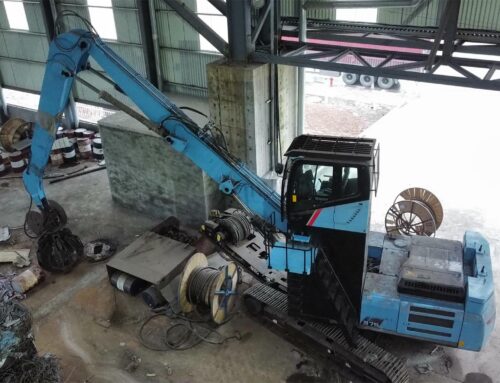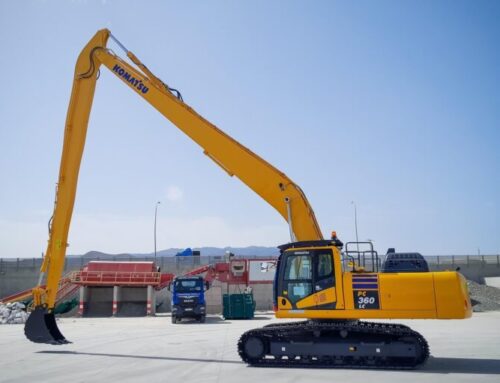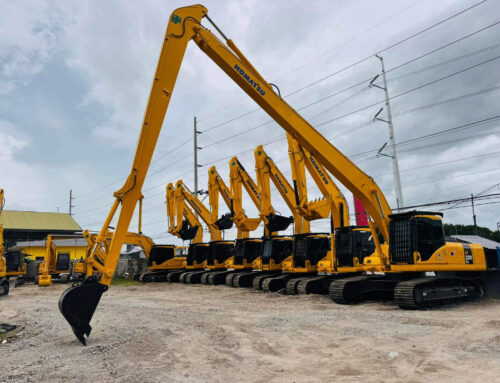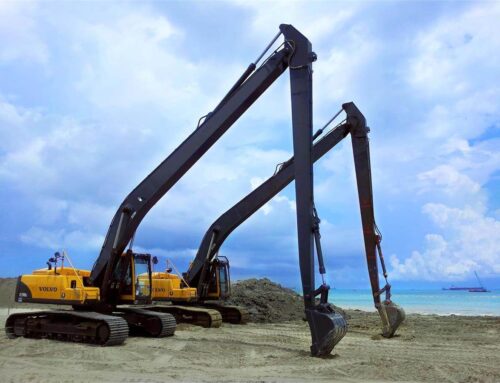Excavator Material Handling Boom are an indispensable key equipment in earthwork and material unloading operations. Whether it is on construction sites, mining operations, or other heavy engineering projects, dumping arms play an important role. However, many customers may have some questions when purchasing and using dumping arms. In order to help everyone better understand this equipment, we have summarized 10 common questions about excavator dumping arms and provide detailed answers.
-
What is the maximum lifting capacity of Excavator Material Handling Boom?
The lifting capacity of dumping arms usually depends on the model of excavator connected, the pressure of the hydraulic system, and the design structure of the boom. Generally speaking, the lifting capacity of most dumping arms is between 1 ton and 5 tons, but for high-end models, the lifting capacity may be greater. To ensure the safety of the operation, users should choose the appropriate lifting capacity according to the actual operation needs when purchasing dumping arms.
-
What is the length and maximum operating range of the material handling boom?
The length of the excavator material handling boom is usually between 3 meters and 6 meters, and the specific length can be customized according to customer needs. The maximum operating range depends on the length of the unloading arm and the power of the hydraulic system. Generally, the operating radius of the unloading arm can reach 8 to 12 meters. Therefore, when choosing an unloading arm, customers need to determine the appropriate length and operating range based on the size of the work site and the type of operation.
-
Is the unloading arm compatible with all types of excavators?
Not all excavators are compatible with all unloading arms. Different excavators have different hydraulic systems and interface sizes, so when choosing an unloading arm, it is necessary to confirm the compatibility of the unloading arm with the excavator. Generally speaking, unloading arms of major brands will provide options that are compatible with common models of excavators, but customers are still advised to consult suppliers before purchasing to ensure compatibility.
-
What materials are unloading arms made of?
Unloading arms are usually made of high-strength steel or alloy steel, which can withstand the pressure and impact of heavy-duty operations. In order to increase the service life, many high-end unloading arms also use anti-corrosion and anti-wear surface coatings to ensure that they can work stably for a long time in harsh environments.
-
What is the maximum working pressure of the unloading arm hydraulic system?
The working pressure of the hydraulic system is one of the key factors affecting the performance of the dump arm. Generally speaking, the working pressure of the hydraulic system of the excavator material handling boom is usually between 200 and 350 bar. Higher working pressure means that the dump arm can provide stronger working capacity, but it also requires the hydraulic system to have higher stability and durability. Knowing the specifications of the hydraulic system is essential to ensure working efficiency when purchasing.
-
Can the material handling boom be customized for specific lifting tasks?
Yes, many suppliers provide customization services to design the excavator material handling boom according to the special needs of customers. For example, customers can choose dump arms with different lengths, load capacities and attachment configurations according to the characteristics of the work site. This customization service helps to maximize the use efficiency of the dump arm and improve working flexibility.
-
How easy is the material handling boom to install on the existing excavator?
The process of installing the dump arm is relatively simple and is usually installed by professionals. The dump arm is connected to the hydraulic system, power system and bracket of the excavator, so it is necessary to ensure that all connections are tight and correct during installation. Most equipment suppliers provide detailed installation instructions to help customers complete the installation process smoothly.
-
What kind of maintenance does the unloading arm require to ensure long-term performance?
To extend the service life of the unloading arm, regular maintenance is very important. Routine maintenance includes checking the oil level and pressure of the hydraulic system, cleaning the moving parts to prevent dust accumulation and corrosion, checking whether the connecting bolts are loose, and ensuring that there are no leaks in the hydraulic oil pipeline. In addition, the surface of the unloading arm should be regularly coated with anti-rust oil to avoid long-term exposure to bad weather and corrosion.
-
Does the unloading arm come with a warranty? If so, what is the warranty coverage?
Most unloading arms provide a warranty period of 1 to 2 years. The warranty generally covers manufacturing defects, material problems, and failures that occur during normal use. It should be noted that the warranty does not cover damage caused by improper operation, overloading, or lack of proper maintenance. At the time of purchase, customers should understand the specific warranty terms and ensure that they can obtain the necessary after-sales service.
-
What safety features does the discharge arm have?
The discharge arm is equipped with a variety of safety features to ensure that no accidents occur during high-load operations. Common safety features include overload protection devices, hydraulic system pressure limiters, emergency stop devices, etc. These features can effectively prevent the discharge arm from overloading or hydraulic system failures, ensuring safety during operation.
-
Can the discharge arm be used in bad weather or extreme temperature conditions?
High-quality discharge arms are specially designed to work properly in extreme weather conditions. In order to adapt to low-temperature environments, discharge arms usually use low-temperature hydraulic oil; in high-temperature environments, the hydraulic system and materials of the discharge arm are optimized to ensure stable operation. When used in extreme conditions, regular inspections of the hydraulic system and equipment status can effectively avoid equipment failures.
-
What is the weight and stability of the discharge arm?
The weight of the discharge arm directly affects the stability of the excavator. Although the discharge arm itself is designed to be light, the increased load may affect the center of gravity of the excavator. Therefore, when using the excavator material handling boom, the operator needs to pay special attention to load distribution to avoid the risk of excavator instability or rollover caused by improper use.
-
Can the material handling boom handle all types of materials?
Most excavator material handling boom are suitable for common construction and earthmoving materials, such as sand, stone, construction waste, etc. However, for special materials (such as sharp objects or chemically corrosive materials), it may be necessary to use a dump arm with a different design or add additional protection. When selecting a dump arm, users should consider the characteristics and requirements of the material to be handled.
-
Does the material handling boom have an anti-corrosion or anti-wear coating?
Many high-end dump arms use anti-corrosion and anti-wear coatings to extend the service life of the equipment. Especially when working in humid or salt spray environments, anti-corrosion coatings can effectively reduce corrosion and maintain the long-term stability of the dump arm. Advances in coating technology have enabled modern dump arms to adapt to more demanding working conditions.
-
How does the material handling boom affect the fuel efficiency and overall performance of the excavator?
The use of a dump arm may increase the burden on the hydraulic system of the excavator, thereby slightly increasing fuel consumption. However, modern dump arms are usually designed as efficient and low-energy devices, which can provide stronger working capacity while minimizing the additional consumption of fuel. Reasonable working methods and proper maintenance can maintain high working efficiency and low operating costs.
Conclusion
This article answers common questions about excavator material handling boom in detail, hoping to help you better understand this important equipment. When selecting, using and maintaining dump arms, understanding its working principles, technical parameters and safety requirements is crucial to improving working efficiency. If you have other questions, please feel free to contact our customer service team, we will provide you with professional technical support and services.






Leave A Comment